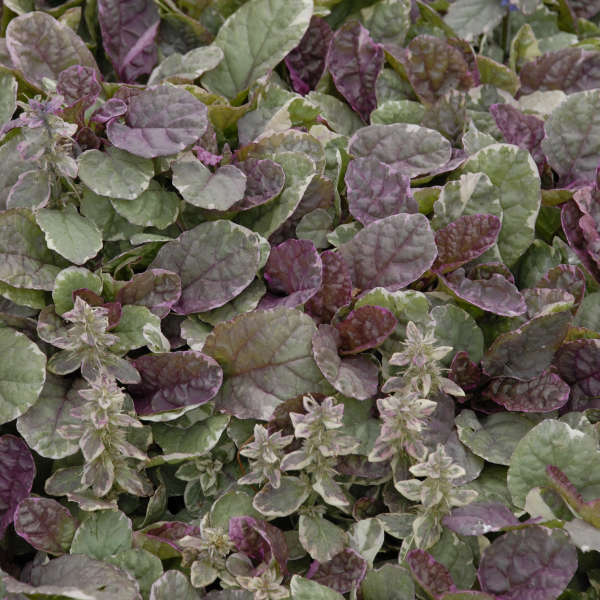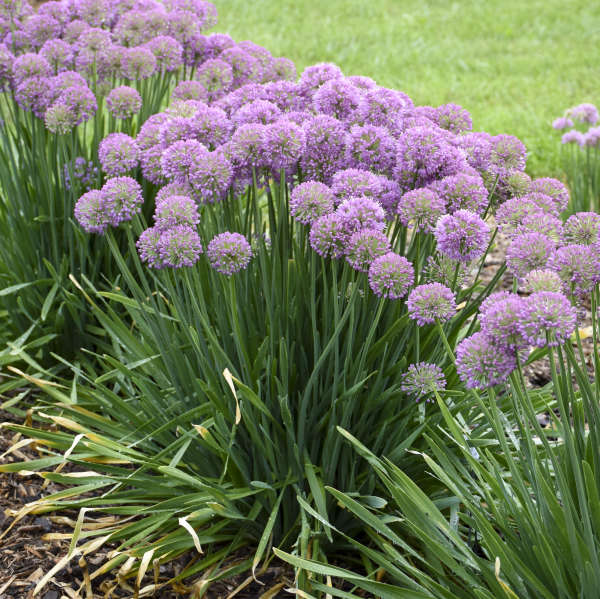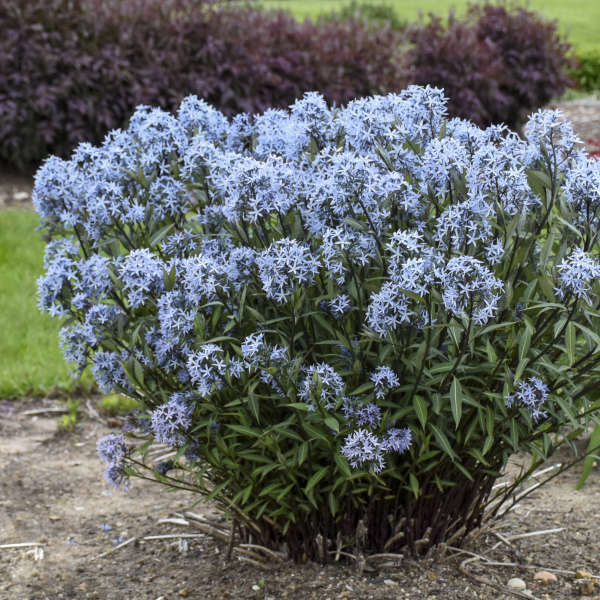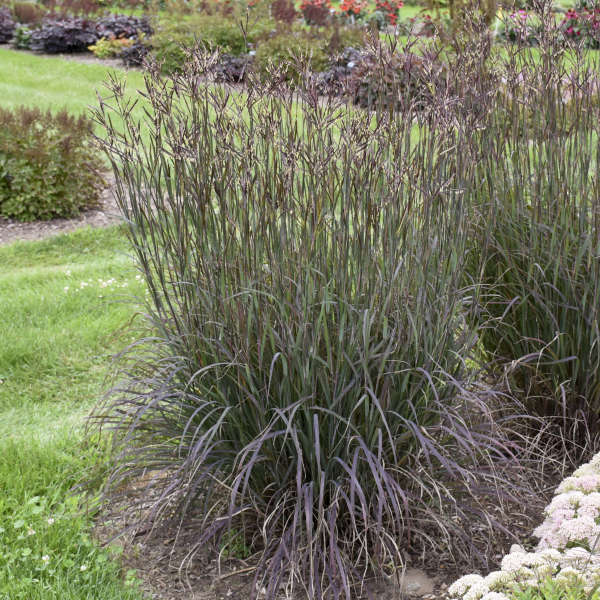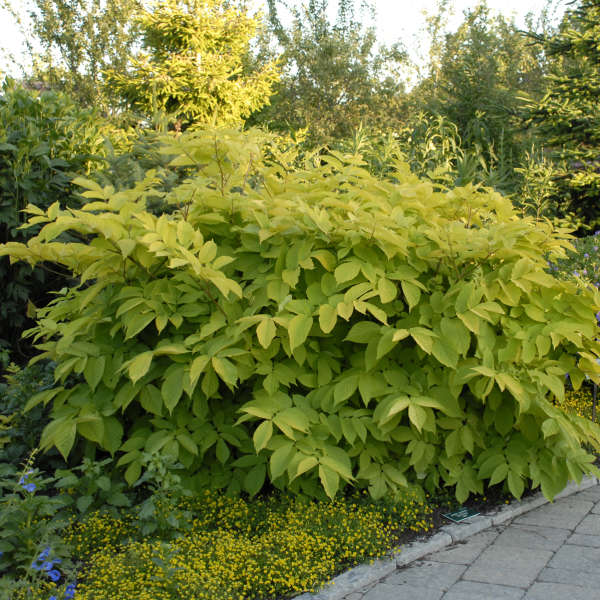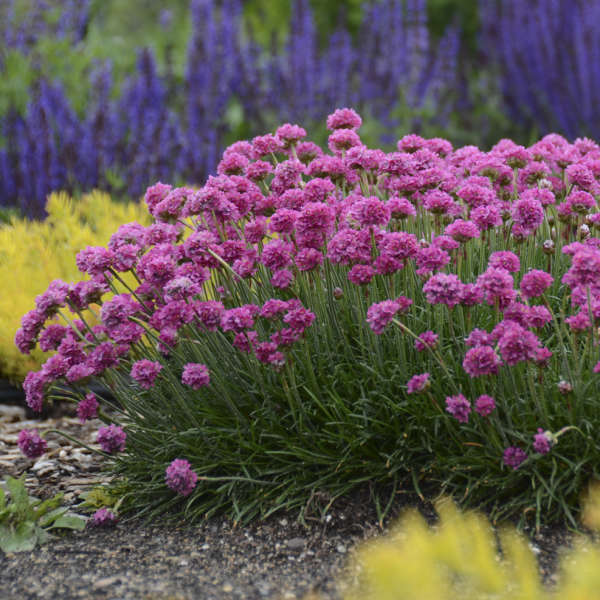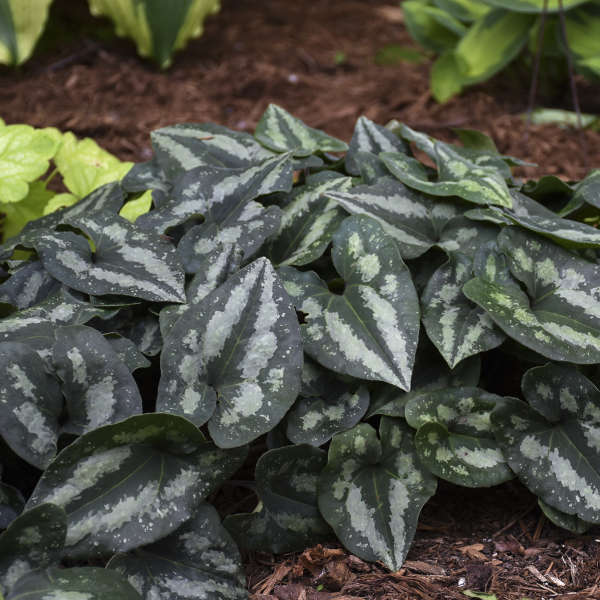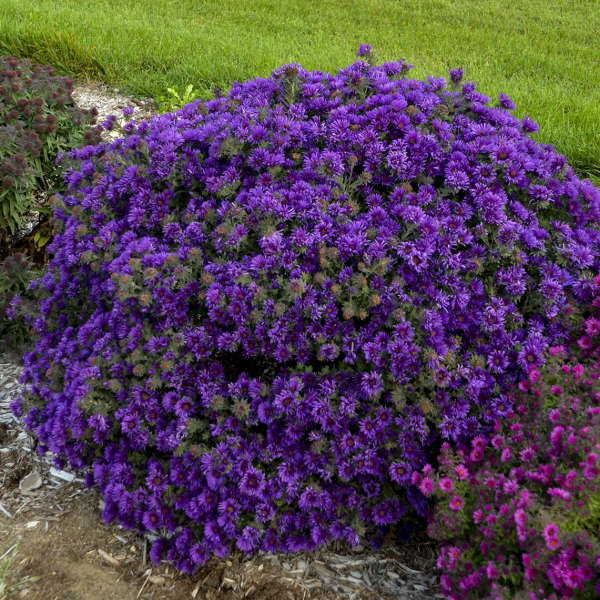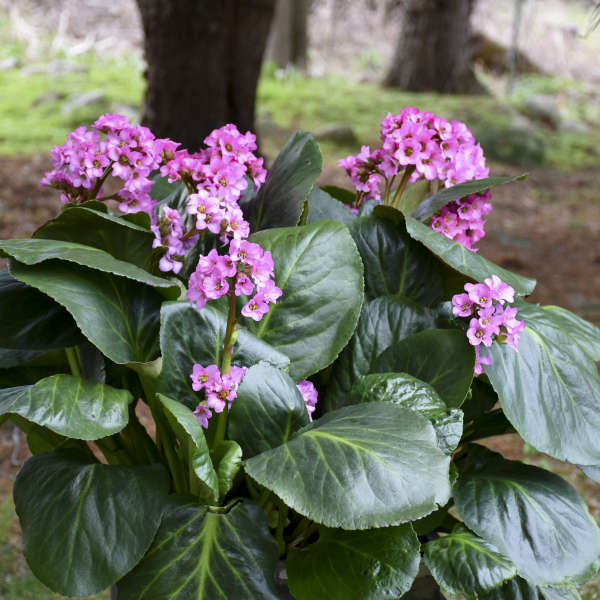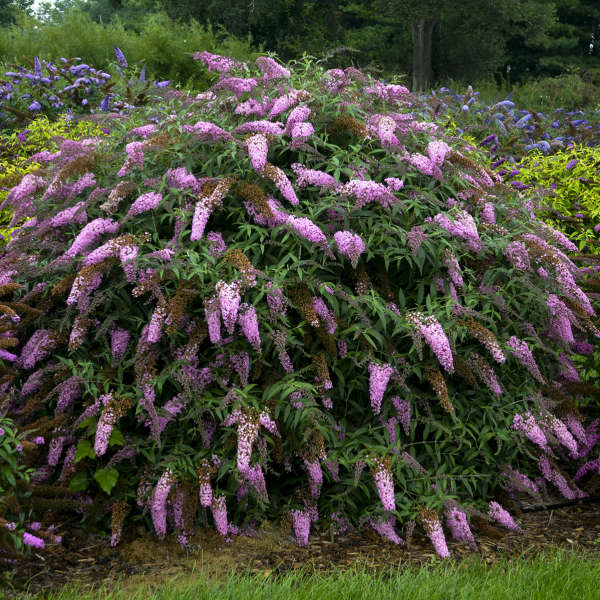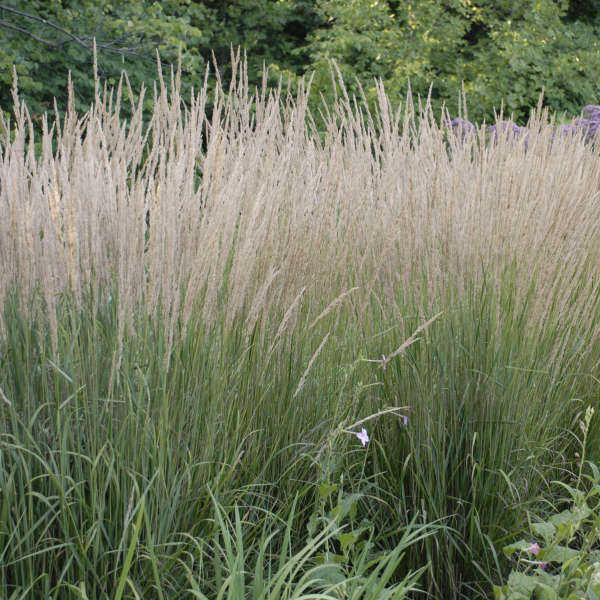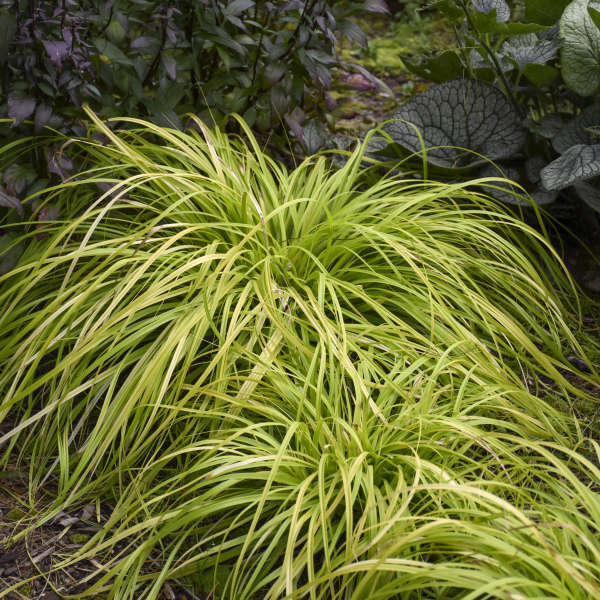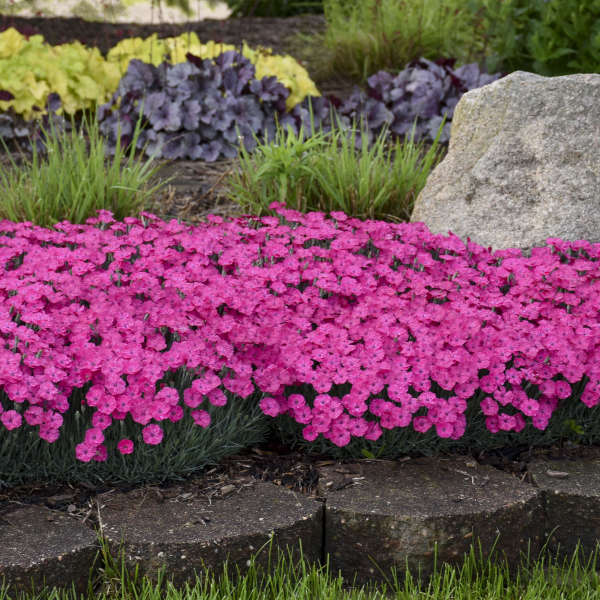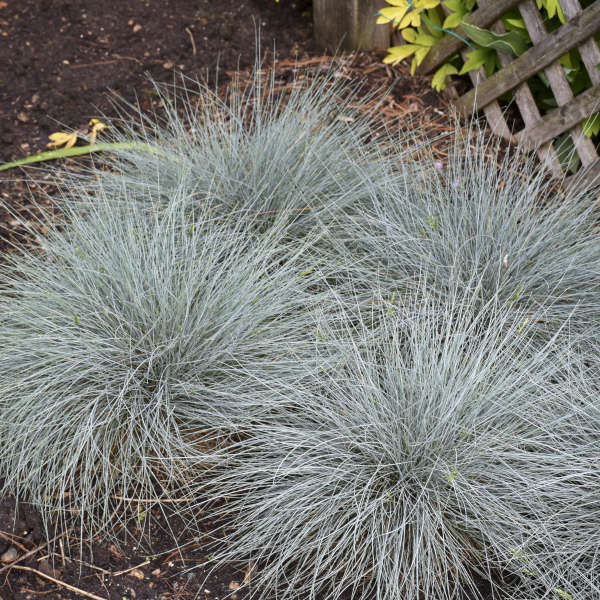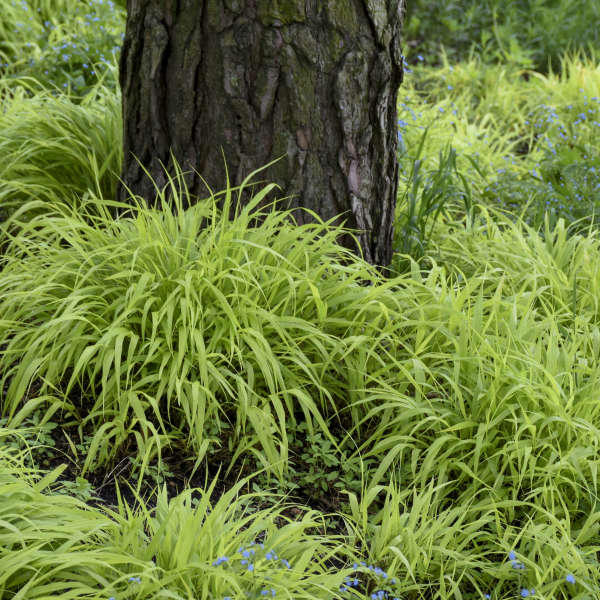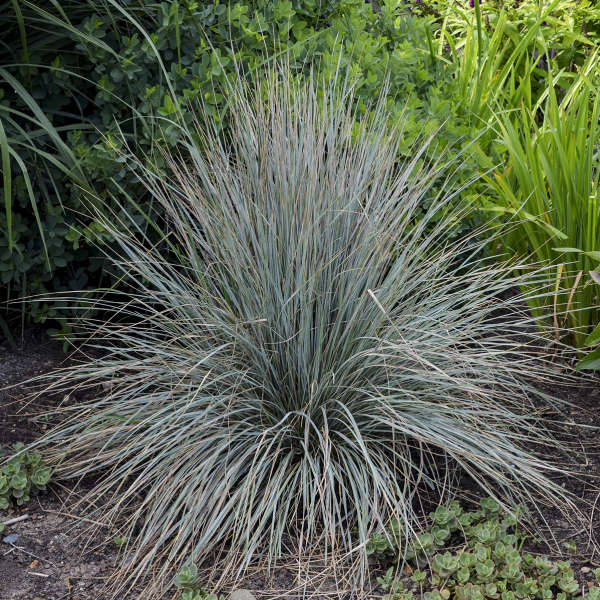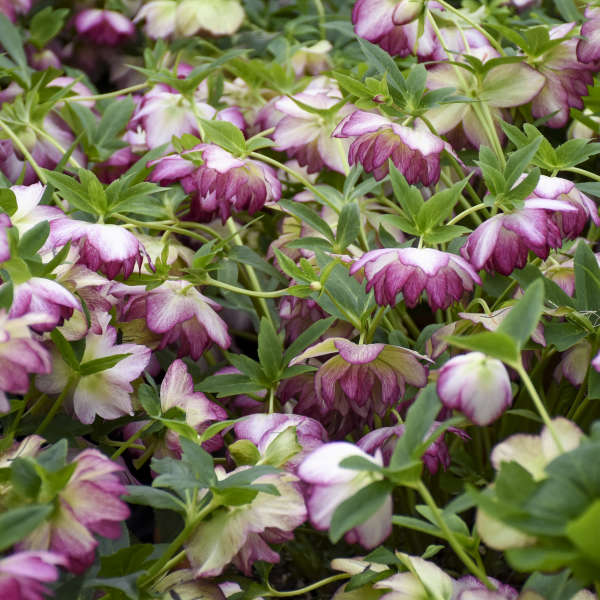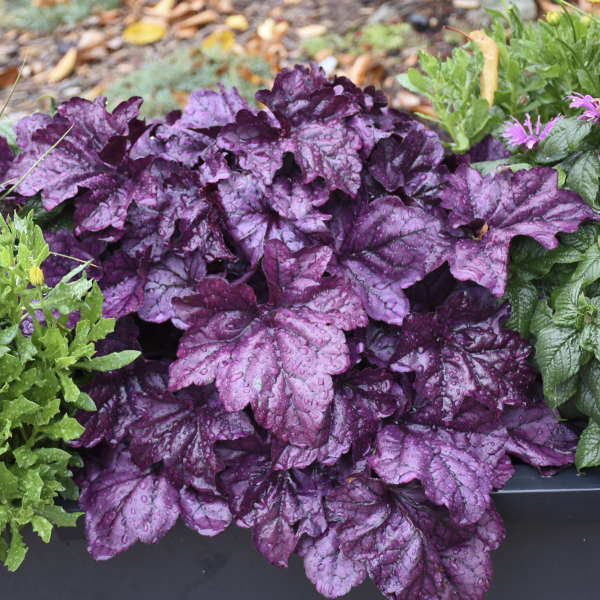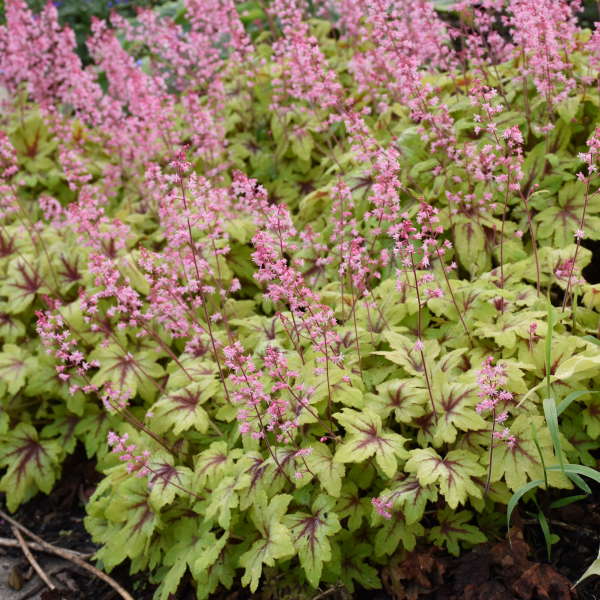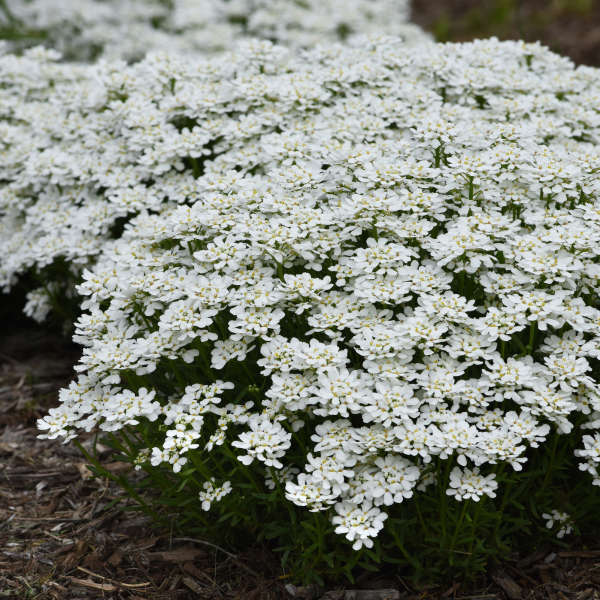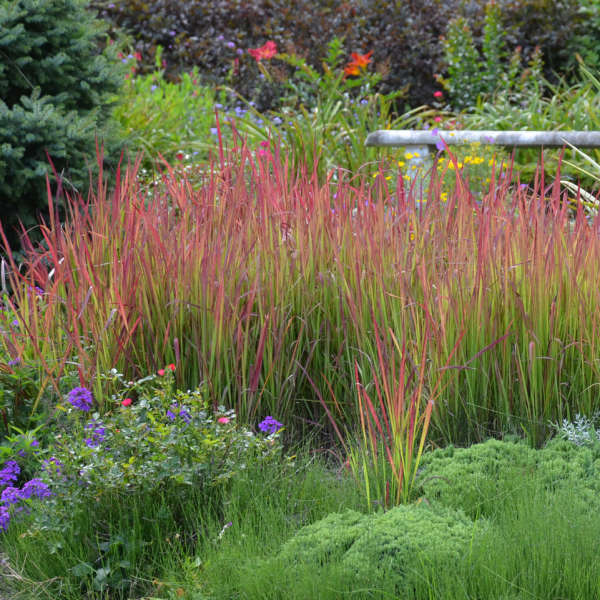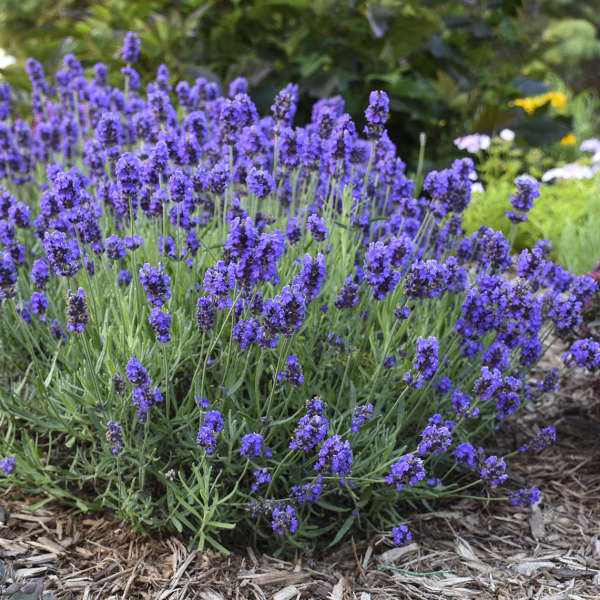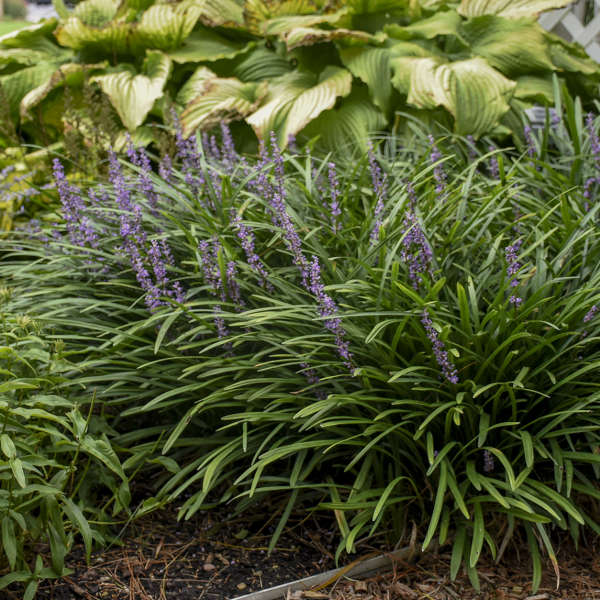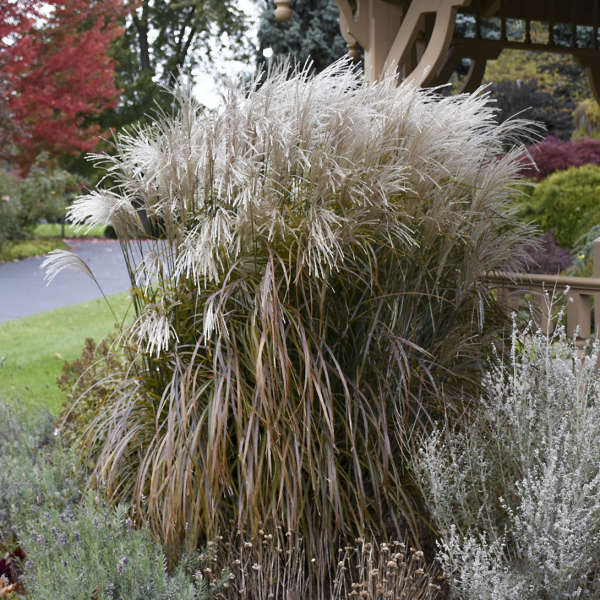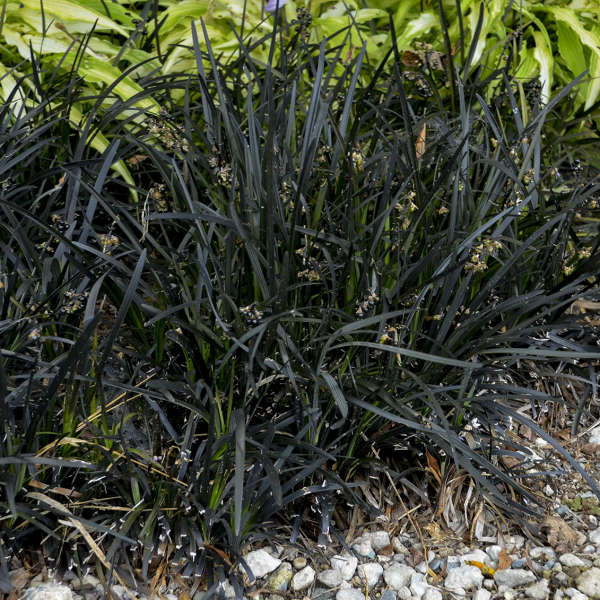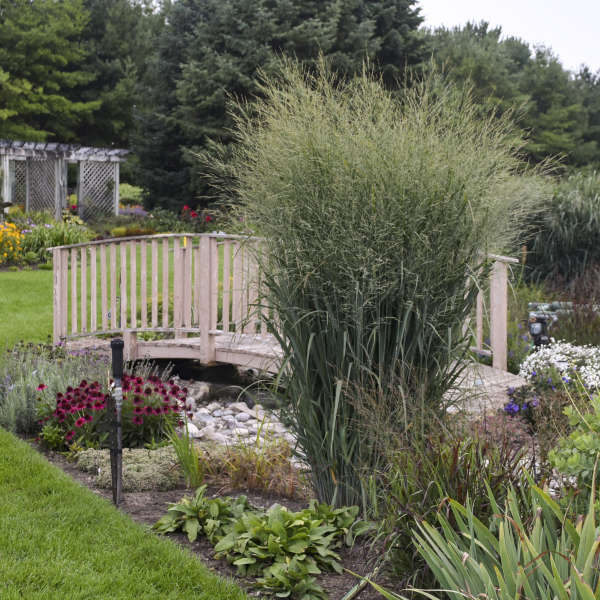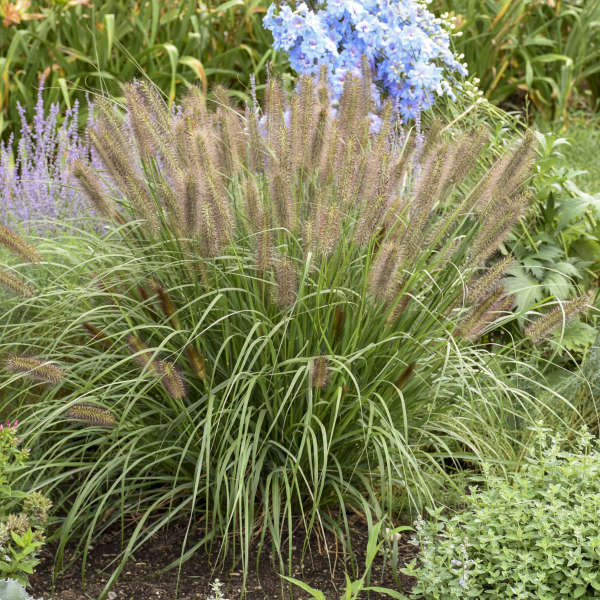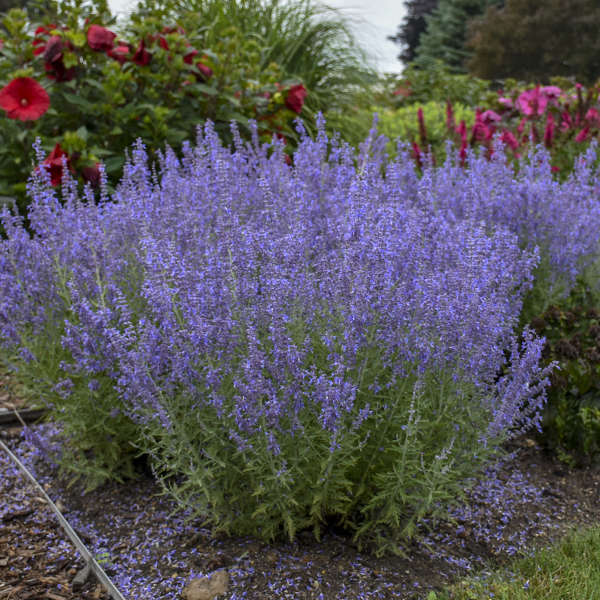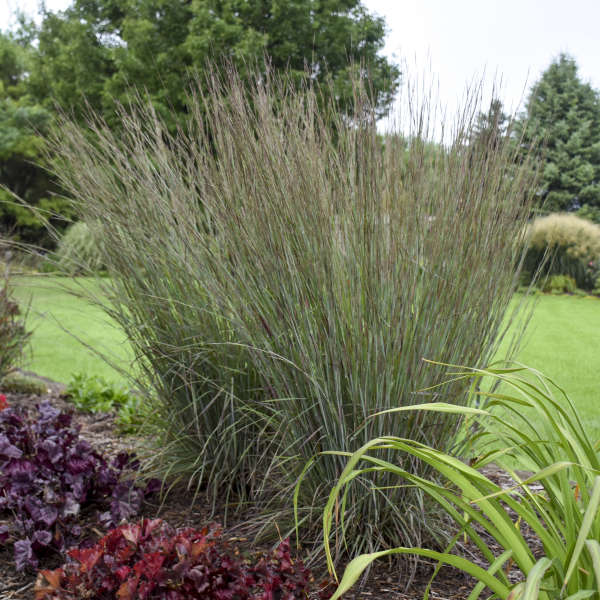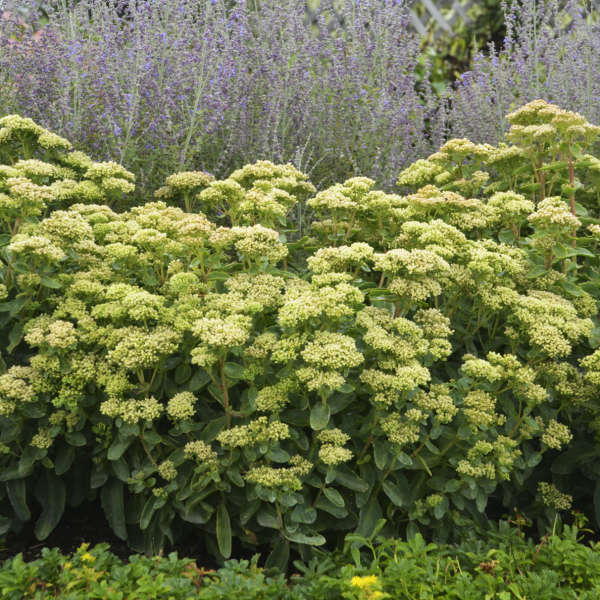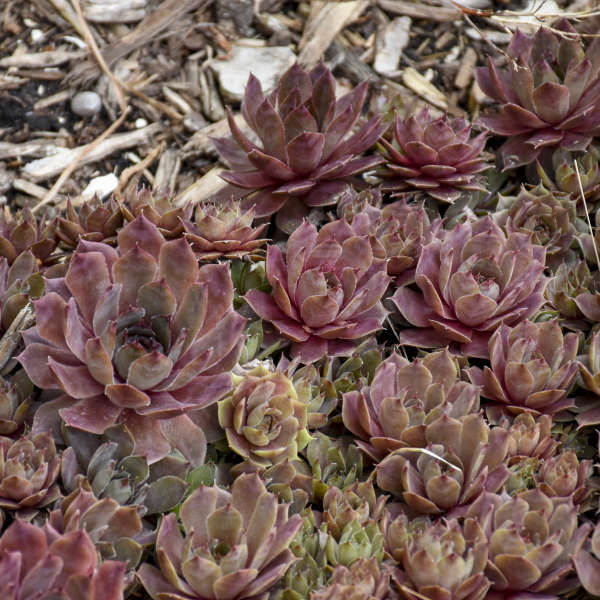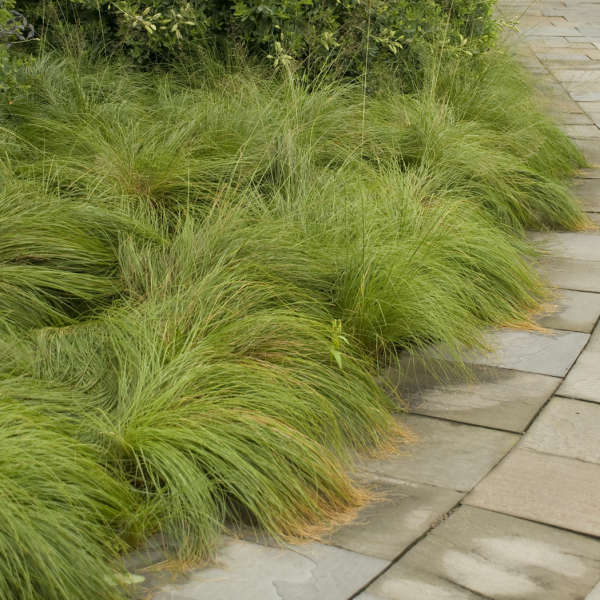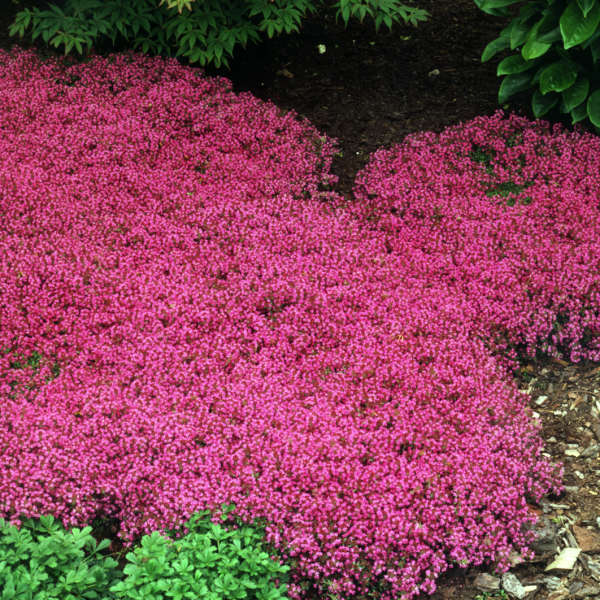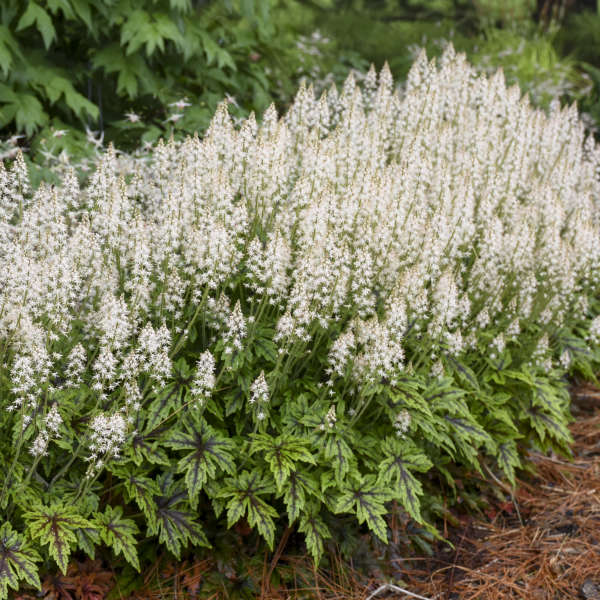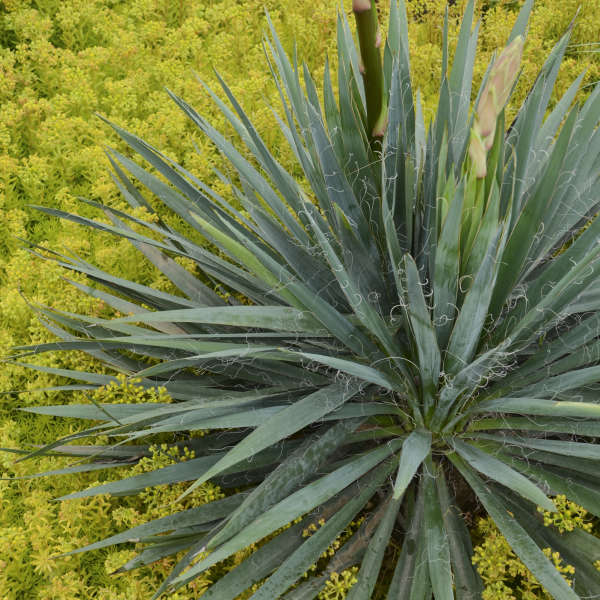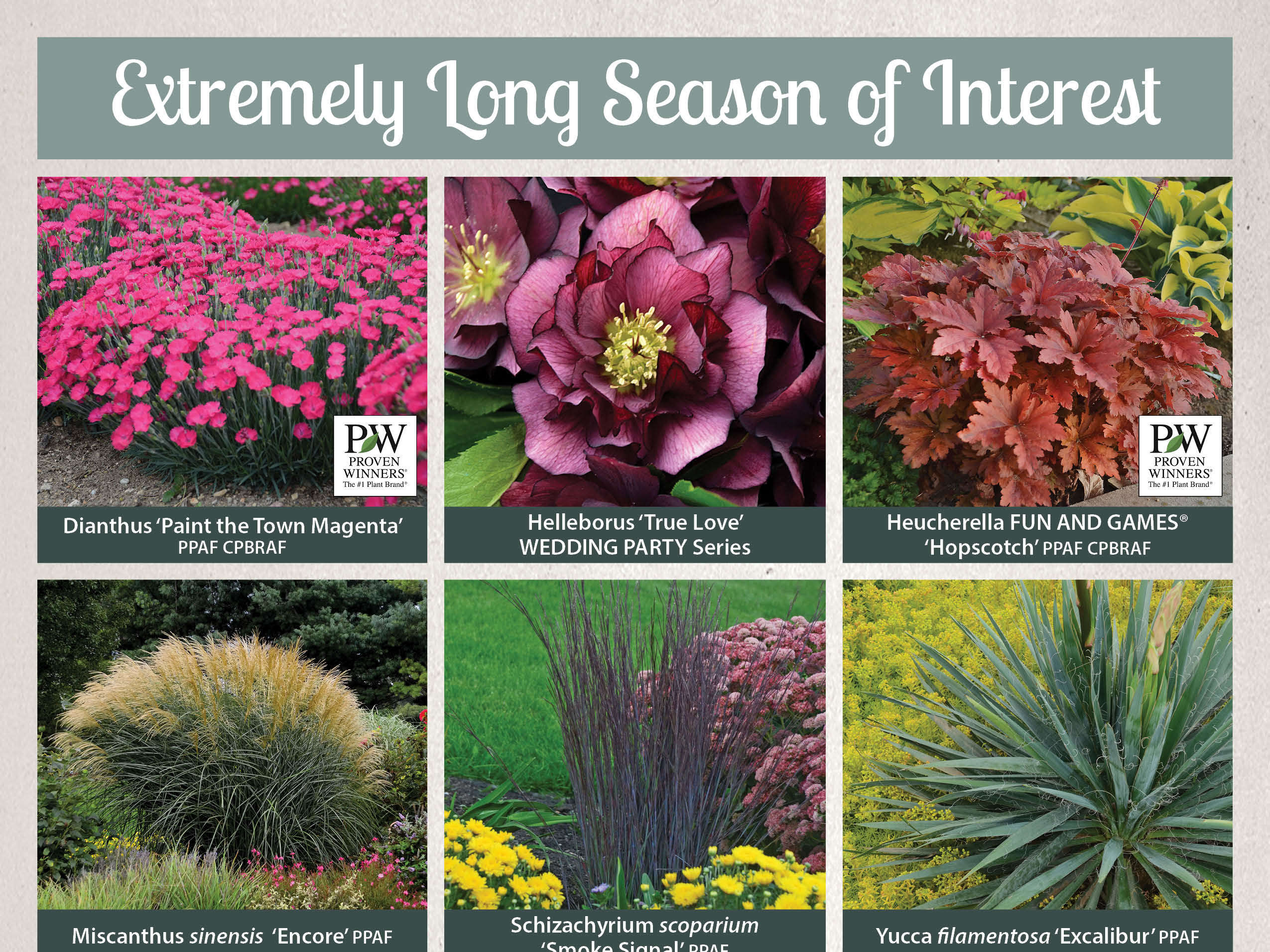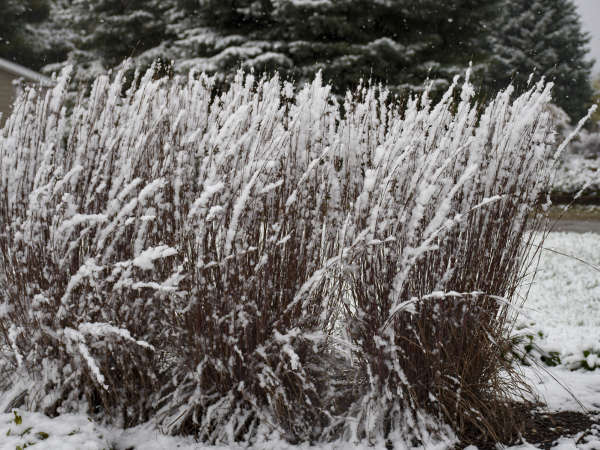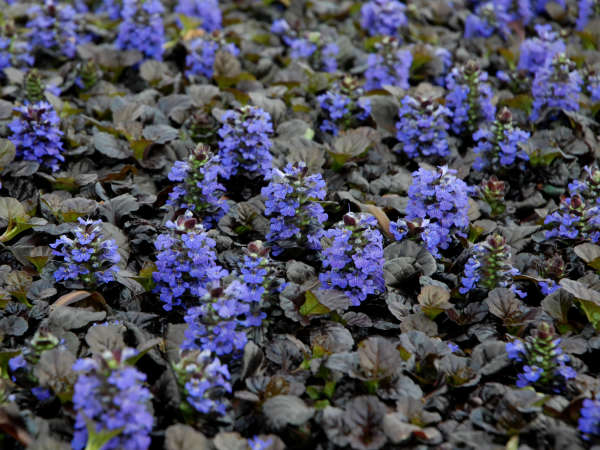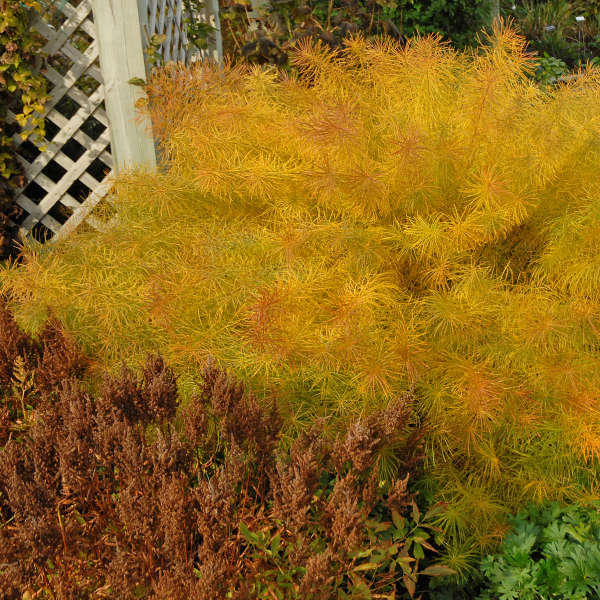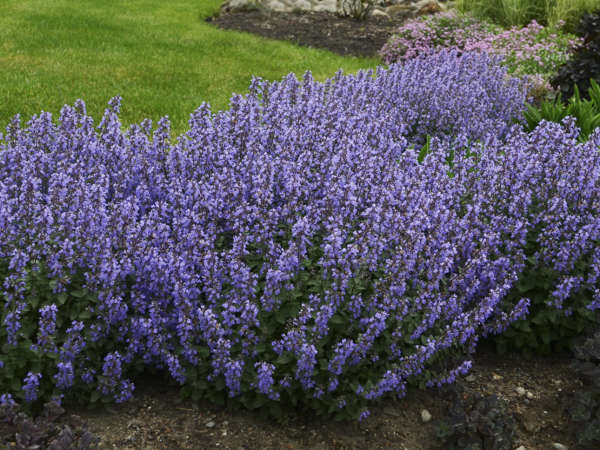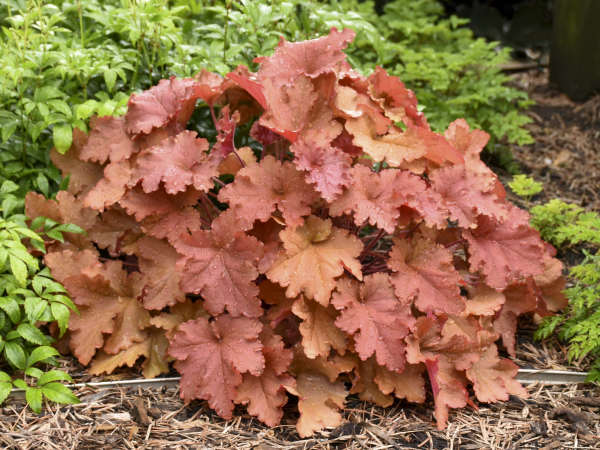Extremely Long Season of Interest
-
1.
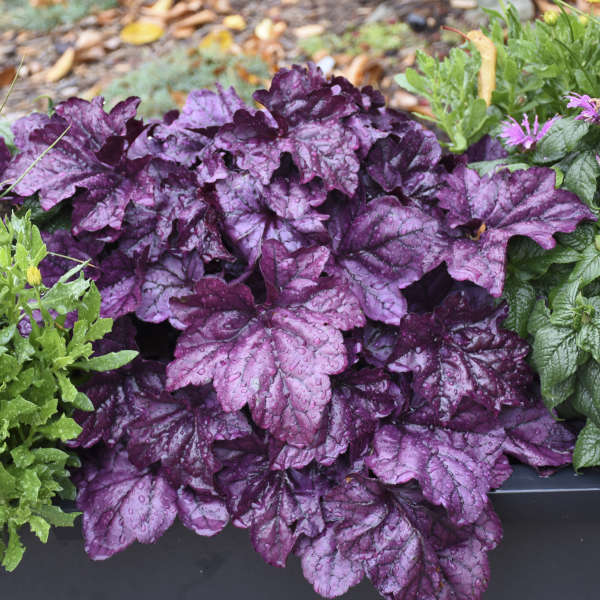
-
2.
Ajuga reptans (Bugleweed)
Full Sun to Full Shade | Zones: 3-10
A. reptans is an evergreen groundcover that can grow in the shade of large trees where grass is hard to establish. Unlike many perennials that are grown only for their flowers, Ajuga is prized for its attractive, colorful foliage that looks nice all year.
Variety Pictured: Ajuga reptans 'Burgundy Glow'
Learn More -
3.
Allium (Ornamental Onion)
Full to Part Sun | Zones: 4-8
Butterflies and honeybees adore the flowers' sweet nectar but deer and rabbits steer clear of this perennial beauty.
Variety Pictured: Allium 'Serendipity'
Learn More

-
4.
Amsonia (Blue Star)
Full to Part Sun | Zones: 4-9
Amsonia adds a billowy, finely textured element to the landscape. It grows into a dense mass, much like a small shrub. The cool blue flowers can be useful in toning down adjacent flower colors. It makes an excellent backdrop for fall-blooming perennials such as sedums and garden mums.
Variety Pictured: Amsonia tabernaemontana 'Storm Cloud'
Learn More

-
5.
Andropogon gerardii (Big Bluestem)
Full Sun | Zones: 3-9
Dubbed the “monarch of the prairie”, this native grass was once the dominant component of the American tall grass prairie. It adapts easily to a wide range of soil and moisture conditions as long as full sun is provided. This long-lived grass has a variety of uses including screening, naturalizing, restoring prairies, and nesting materials for birds and mammals.
Variety Pictured: Andropogon gerardii 'Blackhawks'
Learn More -
6.
Aralia cordata (Golden Japanese Spikenard)
Part Sun to Part Shade | Zones: 3-9
This unique perennial grows best in part to light shade, though if given consistent moisture it can also grow in full sun. It prefers richly organic, deep loamy soil that is moist but well-drained. This plant is not drought tolerant. It typically dies back to the ground in winter and re-emerges in spring to quickly form a shrub-like clump.
Variety Pictured: Aralia cordata 'Sun King'
Learn More -
7.
Armeria (Thrift, False Sea Pink)
Full to Part Sun | Zones: 3-8
As its name implies, Sea Pinks are found naturally along coastlines where few other plants can handle the high salt concentration. Inland, this attribute makes them useful for planting along sidewalks or driveways that are salted in winter. They are also good candidates for rock gardens, troughs, or between pavers.
Variety Pictured: Armeria maritima 'Bloodstone'
Learn More -
8.
Asarum splendens (Chinese Wild Ginger)
Part to Full Shade | Zones: (5)6-9
Asarum splendens is a vigorous rhizomatic species that forms a thick mat of foliage, making it an ideal groundcover for shady gardens. It is also nice in containers. Though this plant is listed as being hardy to zone 6, it may also overwinter in zone 5 with protection.
Variety Pictured: Asarum splendens
Learn More -
9.
Aster
Full Sun | Zones: 3-8
Asters are excellent cut flowers and attract butterflies. They make a terrific accent to fall blooming grasses and the changing colors of the trees. They are native to North America and are generally very easy to grow.
Variety Pictured: Aster 'Grape Crush'
Learn More
-
10.
Bergenia (Heartleaf Bergenia, Pigsqueak)
Full Sun to Full Shade | Zones: 4-9
Bergenia can be used in a variety of ways in the landscape. It is most impressive when used as a durable, evergreen groundcover, but it can also be used in containers and rock gardens. It is quite effective at softening the hard edges of pavement and also works well as an edging or filler plant in flower borders. Bergenias are reliable evergreen perennials and are rabbit and deer resistant.
Variety Pictured: Bergenia 'Miss Piggy'
Learn More -
11.
Buddleia (Butterfly Bush)
Full Sun | Zones: 5-10
Butterfly Bushes have certainly earned their place in the garden over the years, and its easy to see why. Just when we need a breath of fresh air in the late summer heat, they happily burst into bloom. At a time when many other plants are already spent, Buddleia are just beginning their show. Their passive coloring and texture makes a wonderful backdrop for perennials, and you'll love the butterflies, bees, and hummingbirds that flock to their honey-scented blossoms.
Variety Pictured: Buddleia 'Pink Cascade'
Learn More
-
12.
Calamagrostis acutiflora (Feather Reed Grass)
Full Sun | Zones: 4-8
Calamagrostis acutfilora provides a great backdrop for lower growing, flowering perennials throughout the year. It is also useful for screening purposes and will not reseed. A good choice for heavy clay soils.
Variety Pictured: Calamagrostis acutiflora 'Karl Foerster'
Learn More -
13.
Carex (Sedge)
Part Sun to Part Shade | Zones: 5-9
Sedge prefers partial shade and moist, fertile soil. Once established, it is able to tolerate drier conditions. Trim back the old foliage to ground level in early spring. It can also be divided at this time or in early fall.
Variety Pictured: Carex oshimensis 'Everillo'
Learn More -
14.
Dianthus (Pinks)
Full to Part Sun | Zones: 4-9
Dianthus can be grown in full sun or part shade, but the foliage will not be as lush and fewer flowers will be produced if it is grown in hot, dry areas. Regular watering during prolonged dry spells will be necessary. However, they are tolerant of short periods of dryness.
Variety Pictured: Dianthus 'Paint the Town Magenta'
Learn More

-
15.
Festuca (Fescue)
Full to Part Sun | Zones: 4-8
When it comes to ornamental grasses, Blue Fescue has long been a popular choice due to its diminutive size and interesting texture.
Variety Pictured: Festuca glauca 'Blue Whiskers'
Learn More
-
16.
Hakonechola macra (Hakone Grass)
Part to Full Shade | Zones: 5-9
Hakonechloa is grown mainly for its beautiful foliage, though it does produce seed heads. Tiny, inconspicuous reddish brown flower spiklets appear in airy clusters from late summer thru early fall.
Variety Pictured: Hakonechloa macra 'All Gold'
Learn More -
17.
Helictotrichon sempervirens (Blue Oat Grass)
Full Sun | Zones: 3-8
Blue Oat grass looks like a miniature water fountain, with its densely packed leaves gently spraying upward and arching back downward at the tips. This species displays spiky, blue-gray foliage that will draw your attention all season long. Blue Oat Grass adds a wonderful coarse element to rock gardens, coastal gardens, or dry hillsides.
Variety Pictured: Helictotrichon sempervirens
Learn More -
18.
Helleborus (Lenten Rose)
Full Sun to Full SHade | Zones: 4-9
Hellebores are the harbingers of spring, blooming for six weeks or more beginning in late winter. This is the perfect plant for naturalizing in moist, woodland areas where its extensive root system will spread as far as it is allowed.
Variety Pictured: Helleborus WEDDING PARTY® 'Blushing Bridesmaid'
Learn More
-
19.
Heuchera (Coral Bells)
Part Sun to Full Shade | Zones: 4-9
Coral bells are easy to grow and blend easily with most other perennials in the landscape. Because of their low, mounding habit, they are often used as edging along paths or in containers. Try cutting a few of the tall flower scapes for fresh bouquets.
Variety Pictured: Heuchera DOLCE® 'Wildberry'
Learn More

-
20.
Heucherella (Foamy Bells)
Part Sun to Full Shade | Zones: 4-9
Heucherella is a hybrid genus produced from a cross between Heuchera and Tiarella which are both native to the United States.
Variety Pictured: Heucherella FUN AND GAMES® 'Eye Spy'
Learn More

-
21.
Iberis sempervirens (Evergreen Candytuft)
Full Sun | Zones: 4-9
An old-time favorite, Candytuft is a charming plant for perennial gardens. Because of its drought tolerance, it makes a great filler for crevices in walls or between the stones of walkways. It is also effective as edging or groundcover.
Variety Pictured: Iberis sempervirens 'Snowsation'
Learn More -
22.
Imperata cylindrica (Japanese Blood Grass)
Full Sun | Zones: 5-9
Japanese Blood Grass forms an upright clump of green leaves with striking blood red tips. As the season progresses, the foliage becomes more and more red, glowing nearly all-red in the fall. This grass rarely flowers.
Variety Pictured: Imperata cylindrica 'Red Baron'
Learn More -
23.
Lavandula (Lavender)
Full Sun | Zones: 4-9
Gardeners around the world have been growing lavender for centuries for its intensely fragrant flowers, beautiful appearance, and ease of culture.
Variety Pictured: Lavandula angustifolia Sweet Romance®
Learn More
-
24.
Liriope muscari (Blue Lily-turf, Monkey Grass)
Full Sun to Full Shade | Zones: 5-10
A grass-like plant that blooms! Lirope is a unique, evergreen grassy perennial with wide, dark green, strappy leaves and a fountain-like habit. Delightful, lilac-purple flowers resembling grape hyacinths are displayed above the foliage in late summer.
Variety Pictured: Liriope muscari 'Big Blue'
Learn More -
25.
Miscanthus sinensis
Full to Part Sun | Zones: 5-9
Miscanthus is versatile from a design standpoint; it can be used as a specimen, for massing or screening, in large containers, or at the pond's edge. Plant this grass where its wonderful winter interest can be enjoyed.
Variety Pictured: Miscanthus sinensis 'Oktoberfest'
Learn More -
26.
Ophiopogon planiscapus (Black Mondo Grass)
Part to Full Sun | Zones: 5-9
Black Mondo Grass adds dramatic flair to combination containers but can also be grown en masse as a low groundcover. Use it as a foil for silver or gold foliage plants or combine with succulent temperennials in shallow troughs.
Variety Pictured: Ophiopogon planiscapus 'Niger'
Learn More -
27.
Panicum virgatum (Switch grass)
Full Sun | Zones: 4-9
Switch grass gets its name from the peaceful swishing sound it makes when blowing in the wind. All parts of this grass are very sturdy, and will remain standing thru winter unless snows are heavy. This provides important cover for birds during the coldest days of winter. This grass is very versitile from a design standpoint; it is effective as a specimen, in masses, for screening, alongside ponds or streams, or even in large containers.
Variety Pictured: Panicum virgatum PRAIRIE WINDS® 'Totem Pole'
Learn More

-
28.
Pennisetum alopecuroides (Fountain Grass)
Full Sun | Zones: 5-9
Pennisetum prefers to be grown in rich loamy soil with good drainage and full sun or light shade. However, it will grow in rocky or sandy soil as long as it remains fairly moist.
Variety Description: Pennisetum alopecuroides 'Puppy Love'
Learn More
-
29.
Perovskia atriplicifolia (Russian Sage)
Full Sun | Zones: 4-9
The ideal plant for hot, dry climates! Russian Sage is classified as a sub-shrub or woody perennial. It performs very well in full sun and any well-drained soil. Average to dry moisture levels are ideal, and few pests bother this plant. If pruning is necessary, do so in Spring when new growth appears. Prune back to just above the lowest bud.
Variety Pictured: Perovskia atriplicifolia 'Denim 'n Lace'
Learn More

-
30.
Schizachyrium scoparium (Little Bluestem)
Full Sun | Zones: 3-9
Schizachyrium is a great choice if you are looking to restore an eroded site, or for a plant that will grow in hot, dry areas where other plants have a hard time surviving.
Variety Pictured: Schizachyrium scoparium PRAIRIE WINDS® 'Blue Paradise'
Learn More

-
31.
Sedum (Stonecrop)
Full Sun | Zones: 3-9
Tall, upright sedums form substantial clumps of foliage which can be substituted for shrubs in the landscape. Their stout, sturdy stems support the massive flower heads which develop in summer and burst into bloom in fall. If left standing, they provide winter interest and food for birds.
Variety Pictured: Sedum ROCK 'N GROW® 'Lemonjade'
Learn More

-
32.
Sempervivum (Hen & Chicks)
Full Sun | Zones: 3-8
Sempervivum is comprised of one large rosette called the "hen" which sprouts many smaller rosettes around it called "chicks". As the plants age, the "hen" may die out and be replaced by the "chicks". Plants can be divided easily at any time by pulling up some of the "chicks" and replanting them elsewhere. This plant is particularly effective when planted in the cracks and crevices of stone walls or walkways. It is also very attractive in containers.
Variety Pictured: Sempervivum 'Purple Beauty'
Learn More -
33.
Sporobolus heterolepis (Prairie Dropseed)
Full Sun | Zones: 3-9
This grass is very heat and drought tolerant because it is deep rooted. It is often planted en masse as a groundcover or as a specimen. Prairie Dropseed is native to North American prairies and occurs naturally from Canada to Texas. Much of it has been destroyed by overgrazing and farming, so now it is only found in undisturbed prairies. Native Americans once used its seeds to make flour. This plant gets its name from the way the tiny mature seeds drop to the ground in the fall. Birds and other wildlife depend on this plant as a nutritious food source.
Variety Pictured: Sporobolus heterolepis
Learn More -
34.
Thymus praecox (Creeping Thyme)
Full Sun | Zones: 3-8
Creeping thyme is native to hot, dry Mediterranean regions. Consequently it thrives in similar conditions in American gardens. Plant it in full sun and moderately fertile, average to dry, well-drained soil.
Variety Pictured: Thymus praecox 'Coccineus'
Learn More -
35.
Tiarella (Foamflower)
Part to Full Shade | Zones: 4-9
Tiarellas can be grown in containers and in the landscape anywhere that dappled to full shade can be provided. They pair beautifully with hostas and ferns. Tiarellas are riding on a tidal wave of popularity thanks to their shade tolerance, unusual leaf shape, dramatically marked foliage, repeat flowering, and light fragrance.
Variety Pictured: Tiarella 'Cutting Edge'
Learn More

-
36.
Yucca filamentosa (Adam's Needle)
Full to Part Sun | Zones: (4)5-10
Yuccas thrive in any type of well-drained soil including those that are very dry. Though they will grow in partial shade, they reach their full potential only if they receive sun all day long. Many yuccas do not bloom until they are mature. Once they start, though, you will see that they were worth the wait. The flower stalks retain some ornamental value after the blooms have faded.
Variety Pictured: Yucca filamentosa 'Excalibur'
Learn More
